It’s that time of year again – the snow is starting to fall, the temperatures are dropping, and the snowmobiles are coming out of hibernation. But before you hit the slopes, make sure your gear is in good condition! One important piece of equipment to maintain is your snowmobile helmet. How often should your helmet be replaced? Let’s take a look at some common questions and answers about helmet replacement frequency.
Table of Contents
The Structure Of Snowmobile Helmet
Most snowmobile helmets are made with an outer shell, a liner, and a retention system. The outer shell is the tough part that protects your head from impacts.
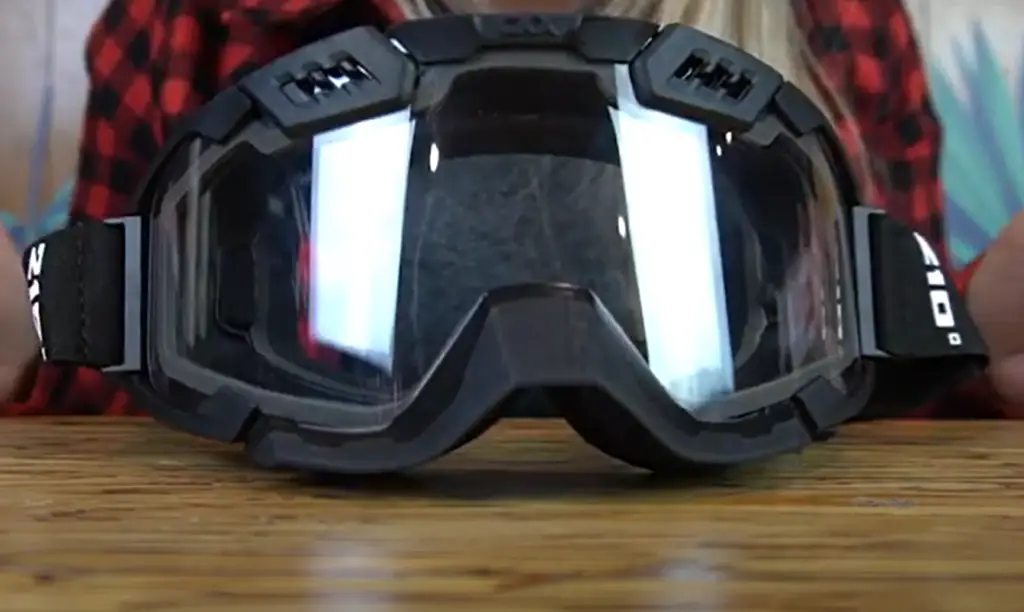
The liner is usually made of EPS foam, which crushes on impact to absorb energy and protect your head. The retention system keeps the helmet snugly on your head so it doesn’t fly off in a crash. [2]
Types Of Snowmobile Helmets
Full Face
Full face helmets offer the most protection because they cover your entire head, including your chin and face. They typically have a visor to protect your eyes from the sun, wind, and snow. Many full face helmets have vents to help you stay cool, and some even have Bluetooth so you can listen to music or take calls while you ride.
If you do a lot of off-trail riding or racing, a full face helmet is a good choice. They provide great protection in case of an accident, and they can also help prevent injuries if you hit a tree or branch.
However, full face helmets can be hot and claustrophobic, so if you don’t like feeling enclosed, or if you ride in warm weather, a full face helmet may not be the best choice for you.
Modular
Modular helmets are similar to full face helmets, but the chin bar is hinged so it can be flipped up. This allows you to drink, eat, or talk without taking off your helmet. Modular helmets provide good protection for your head and face, but since the chin bar is not attached, they don’t offer as much protection in a crash.
If you want the option to flip up your chin bar, or if you find full face helmets too hot or claustrophobic, a modular helmet is a good choice. Just keep in mind that they’re not quite as safe as a full face helmet.
Motocross and Snocross
Motocross and snocross helmets are designed for off-road riding, so they’re not ideal for snowmobiling. They don’t have a face shield, so they won’t protect your face from the cold wind or flying debris. And since they’re not made for speeds over 50 mph, they don’t offer the same level of protection as a full face helmet.
So if you’re looking for a snowmobile helmet, motocross and snocross helmets aren’t the best choice. However, if you also do other types of off-road riding, like dirt biking or ATVing, a motocross or snocross helmet might be a good option because you can use it for multiple activities
Dual Sport Type
Dual sport helmets are designed for both on and off-road riding. They have a face shield to protect your eyes from the sun, wind, and flying debris, and they typically have vents to help you stay cool. Many dual sport helmets also have Bluetooth so you can listen to music or take calls while you ride.
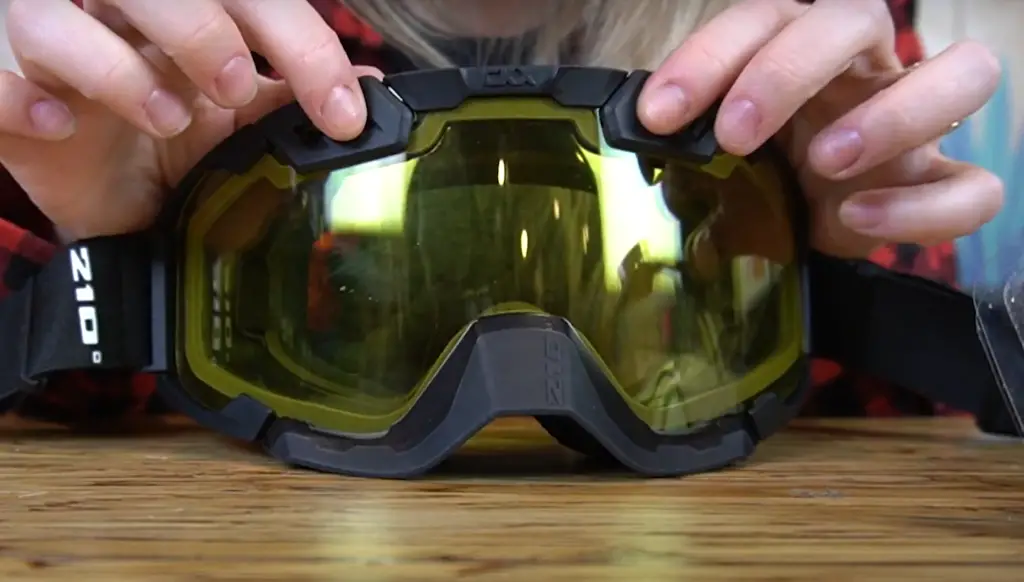
If you do a lot of off-trail riding or racing, a dual sport helmet is a good choice. They provide great protection for your head and face, and they can also help prevent injuries if you hit a tree or branch.
Shields And Lenses
Shields and lenses are the most important part of a snowmobile helmet. They protect your eyes from the wind, sun, and debris. Over time, however, they can become scratched or cracked. Replacing them is simple and inexpensive.
Most companies recommend replacing your shield or lens every two to three years. However, if you ride often or in rough conditions, you may need to replace them more frequently. Inspect your shield or lenses regularly for any damage. If you see any cracks or scratches, replace them as soon as possible.
Dual Pane
Dual pane shields offer the best protection against the elements. They are made of two layers of plastic with a layer of air in between. This creates a barrier that protects your eyes from the wind, sun, and debris.
Dual pane shields are more expensive than single pane shields. However, they last longer and provide better protection.
Inspect your shield regularly for any damage. If you see any cracks or scratches, replace it as soon as possible.Framed vs. Frameless
Snowmobile helmets come in two different styles: framed and frameless.
Framed helmets have a frame around the shield. This provides support and prevents the shield from flexing.
Frameless helmets do not have a frame. Instead, the shield is held in place by tension. Framed helmets are more expensive than frameless helmets. However, they last longer and provide better protection. Most companies recommend replacing your framed helmet every five to seven years. Inspect your helmet regularly for any damage. If you see any cracks or scratches, replace it as soon as possible.
Heated Electric Shield
Heated electric shields are becoming more popular. They use a battery to heat the shield, which prevents it from fogging up. [5] Heated electric shields are more expensive than regular shields. However, they last longer and provide better protection. Most companies recommend replacing your heated electric shield every five to seven years. Inspect your shield regularly for any damage.
Breath Guard
Breath guards are made of foam or fabric. They attach to the bottom of the shield and prevent your breath from fogging up the shield. [4] Breath guards are inexpensive and easy to replace. Most companies recommend replacing your breath guard every two to three years. Inspect your breath guard regularly for any damage. If you see any cracks or scratches, replace it as soon as possible.

In conclusion, how often you need to replace your snowmobile helmet depends on the type of helmet you have and how often you ride. Inspect your helmet regularly for any damage. If you see any cracks or scratches, replace it as soon as possible.
Ventilation
Ventilation is important in a snowmobile helmet. It keeps you cool and prevents the shield from fogging up. Over time, however, the ventilation system can become clogged with dirt and debris. Replacing it is simple and inexpensive.
Most companies recommend replacing your ventilation system every two to three years.
Inspect your ventilation system regularly for any damage. If you see any cracks or scratches, replace it as soon as possible.Safety Rating
DOT
DOT is the US Department of Transportation. The DOT sets safety standards for snowmobile helmets. All helmets sold in the US must meet these standards.
Snell
Snell is a private organization that sets safety standards for snowmobile helmets. Helmets that meet the Snell standard are considered to be some of the safest on the market. However, not all companies choose to have their helmet tested by Snell.
ECE
ECE is the Economic Commission for Europe. The ECE sets safety standards for snowmobile helmets. All helmets sold in Europe must meet these standards. [3]
Why Should You Replace Your Snowmobile Helmet
Your snowmobile helmet is one of the most important pieces of safety equipment. It protects your head from impact in the event of a crash. Over time, however, helmets can become damaged. This can reduce their ability to protect you in a crash.
How Often Should Your Snowmobile Helmet Be Replaced
Most companies recommend replacing your snowmobile helmet every five to seven years. [1] However, if you ride often or in rough conditions, you may need to replace it more frequently. Inspect your helmet regularly for any damage.
In conclusion, how often you need to replace your snowmobile helmet depends on the type of helmet you have and how often you ride. Inspect your helmet regularly for any damage. If you see any cracks or scratches, replace it as soon as possible.Care & Maintenance
Your snowmobile helmet is an important piece of safety equipment. It should be treated with care and maintained regularly. Here are some tips for caring for your helmet:
- Store your helmet in a cool, dry place.
- Avoid exposing it to direct sunlight or extreme heat.
- Do not store your helmet in a car or motorcycle trunk. The temperature extremes can damage the helmet.
- Clean your helmet with mild soap and water. Do not use harsh chemicals or cleaners on the helmet.
- Inspect your helmet regularly for any cracks, scratches, or other damage.
- Replace your snowmobile helmet every five to seven years, or sooner if it is damaged.
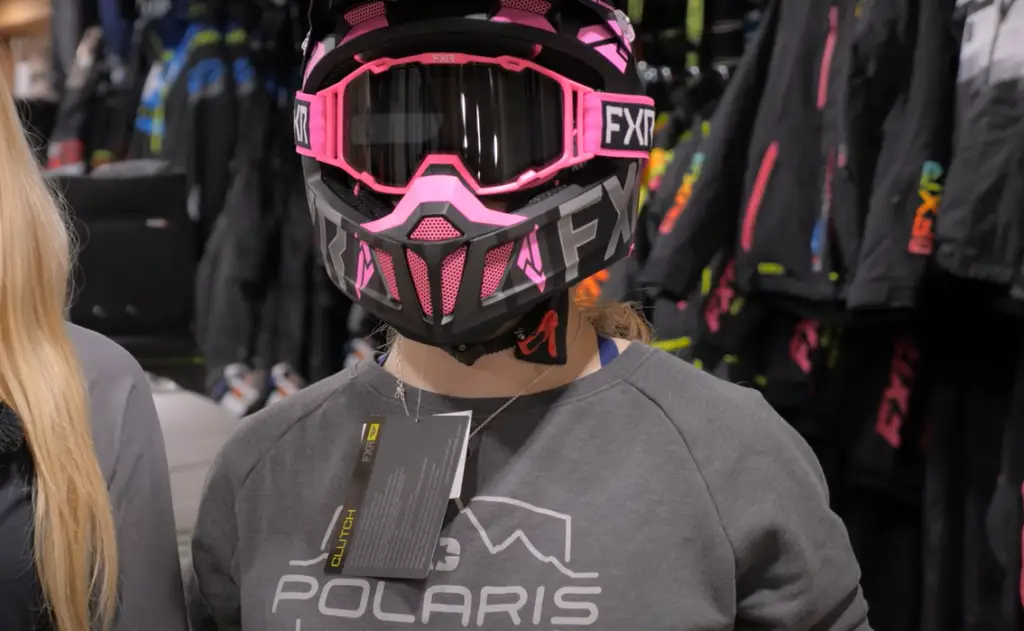
By following these simple tips, you can extend the life of your snowmobile helmet and ensure that it will protect you in the event of a crash.
FAQ
Which helmet is best for a long ride?
There is no definitive answer to this question as it depends on personal preferences. Some people prefer full-face helmets for the added protection they provide, while others find them too hot and claustrophobic. Others prefer open-face helmets for the better visibility and airflow they offer. Ultimately, the best helmet for a long ride is the one that you are most comfortable wearing.
If you do decide to wear a full-face helmet, be sure to pack a pair of goggles so you can keep your eyes protected from the wind and snow. And always make sure your helmet is properly secured before setting off on your journey!
Do snowmobile helmets break in?
Yes, snowmobile helmets do break in. However, it is important to note that they should not be broken in too much. Breaking in your helmet will help it fit better and provide more protection in the event of an accident. To break in your helmet, simply wear it around the house for a few hours or take it out for a few rides.
When should you replace your helmet?
The Snell Memorial Foundation, a not-for-profit organization that certifies helmets for safety, requires manufacturers to do durability testing as part of the certification process. The rule is that a helmet must withstand two impacts from different locations without showing cracks. After those two hits, the helmet is retired. Most manufacturers guarantee their helmets for one impact–but not necessarily two.
How long are helmets good for?
Most helmets are designed for a single impact. That means, if you crash and your helmet hits something hard, it’s time for a new one. However, there are some multi-impact or “MI” helmets on the market that can withstand more than one hit. These helmets are usually more expensive, but they may be a good investment if you do a lot of off-trail riding or if you frequently crash.
Why does my snowmobile helmet keep fogging up?
If your snowmobile helmet is fogging up, it’s probably because the visor isn’t properly sealed. Make sure to clean the visor with a microfiber cloth and check that the seal is tight before you go riding again. If you still have problems, consider buying a new helmet.
Can we wash our helmets with water?
Most snowmobile helmets these days have a liner that can be removed and washed with soap and water. You should remove the liner after every ride to prevent bacteria and sweat from building up. The rest of the helmet can be wiped down with a damp cloth. Be sure to avoid using any harsh chemicals or cleaners on your helmet as they could damage the finish. You should also avoid exposing your helmet to extreme temperatures, as this could also damage the materials.
Useful Video: Motorcycle Helmet Sizing Guide
Conclusions
The frequency with which you need to replace your snowmobile helmet depends on a few different factors. If you frequently ride in extremely cold weather, participate in racing, or are generally hard on your gear, you may need to replace your helmet more often than the average rider. However, as long as you take good care of your helmet and inspect it regularly for any signs of wear and tear, you should be able to get several years of use out of it. If you have any doubts about the condition of your helmet, it’s always better to err on the side of caution and replace it sooner rather than later.
We hope you found this article helpful. Thanks for reading!
References:
- https://bestsnowmobilehelmet.com/how-often-should-your-snowmobile-helmet-be-replaced/
- https://www.westshoremarine.ca/signs-its-time-to-replace-your-helmet/
- https://www.motorbiscuit.com/best-safety-rating-dot-snell-ece/
- https://www.denniskirk.com/learn/snowmobile-helmet-guide
- https://blog.upnorthsports.com/electric-heated-snowmobile-helmets/

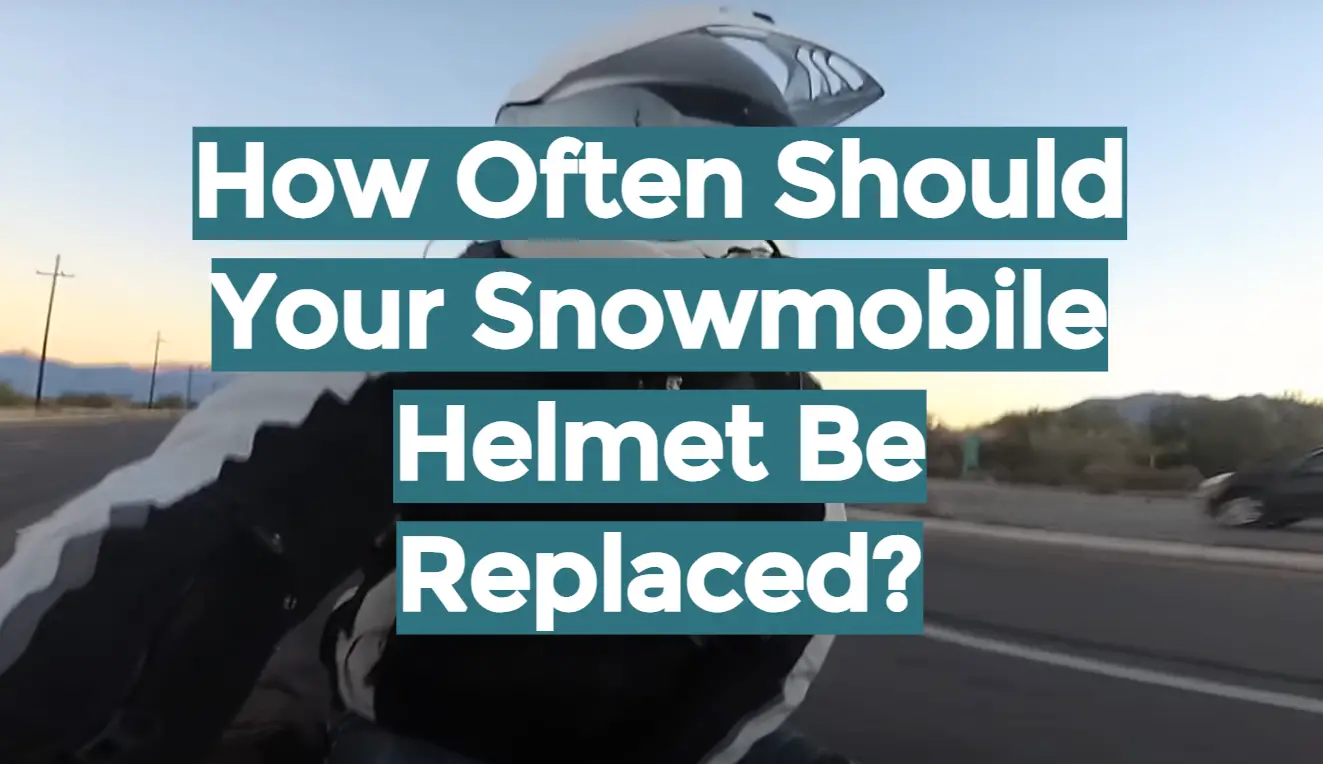
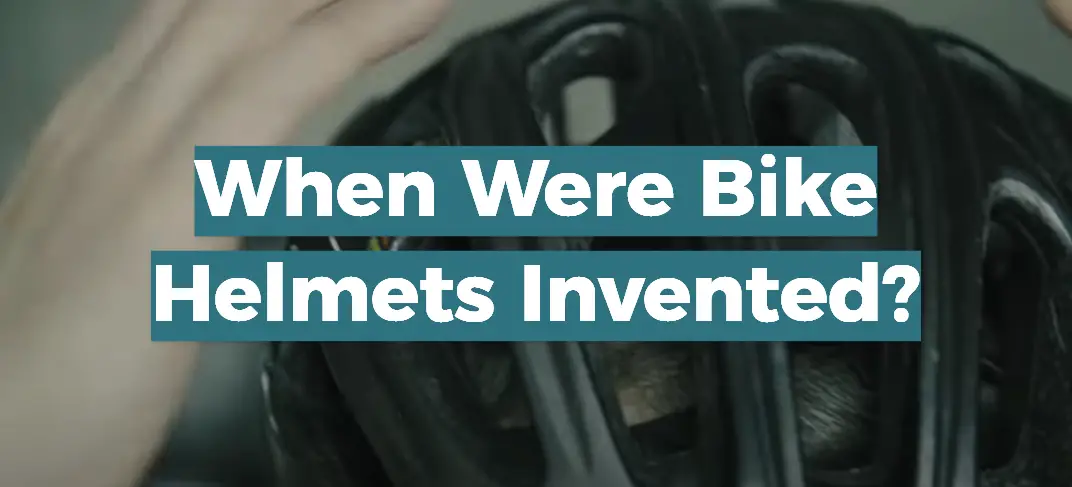
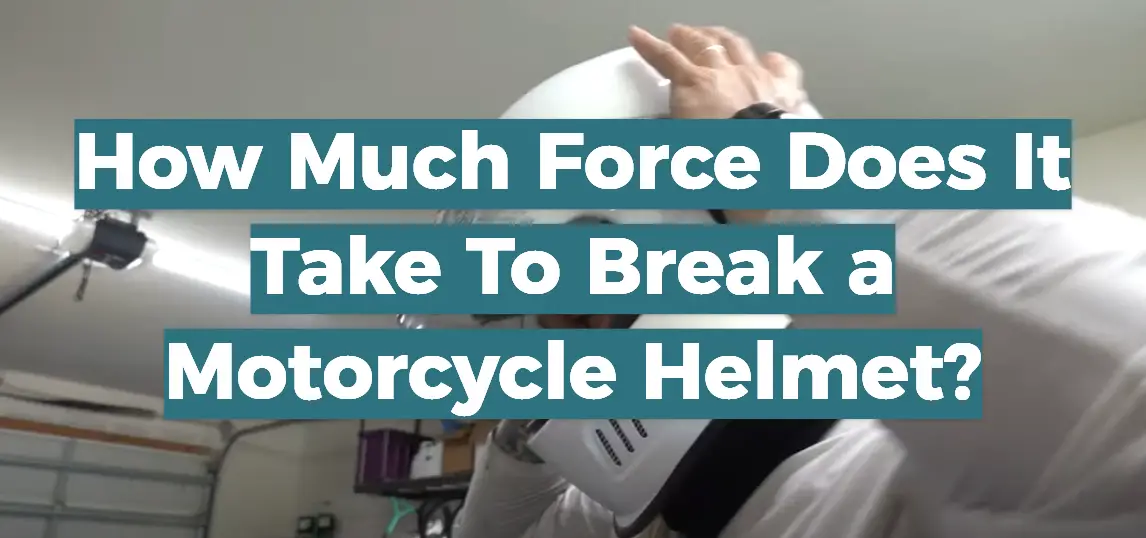
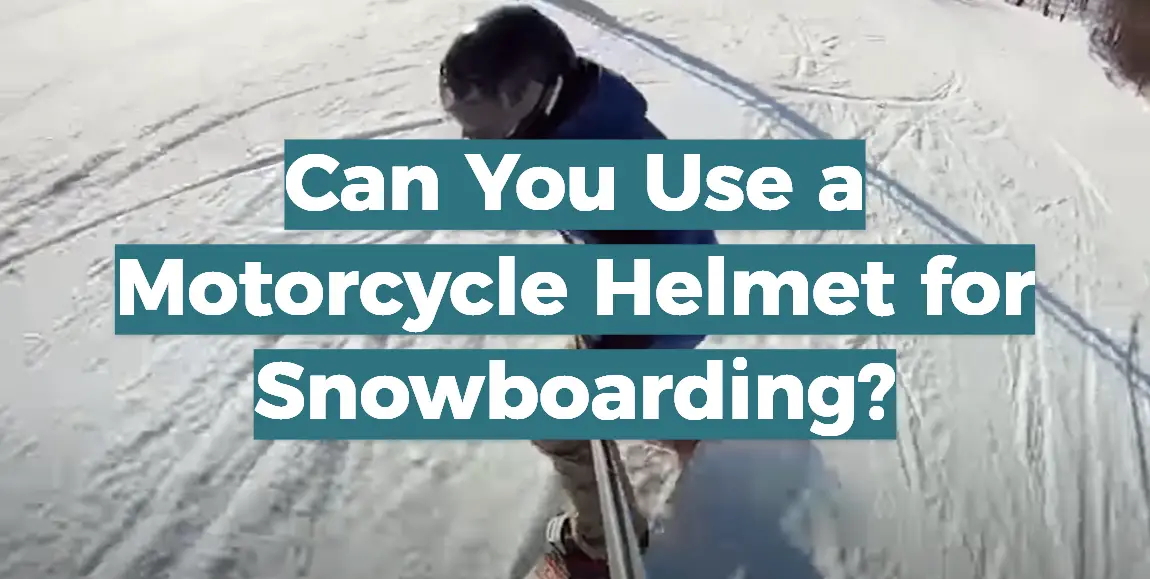
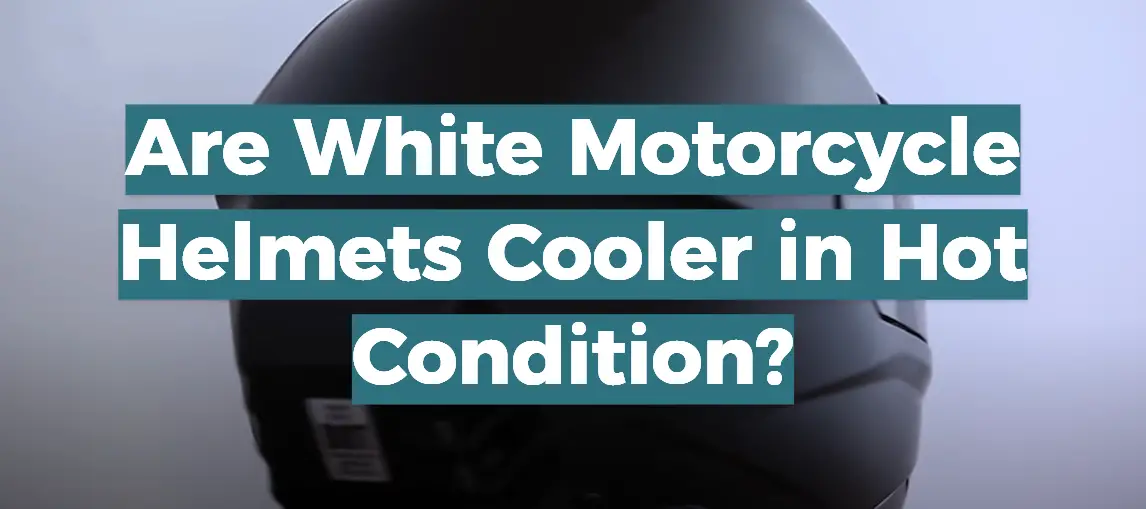
Leave a Reply